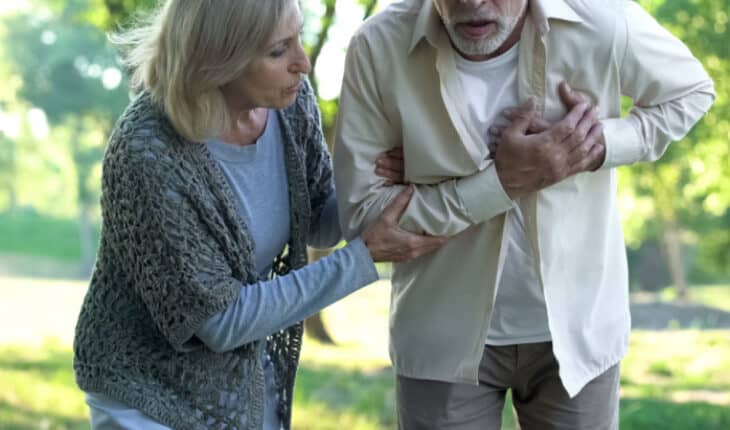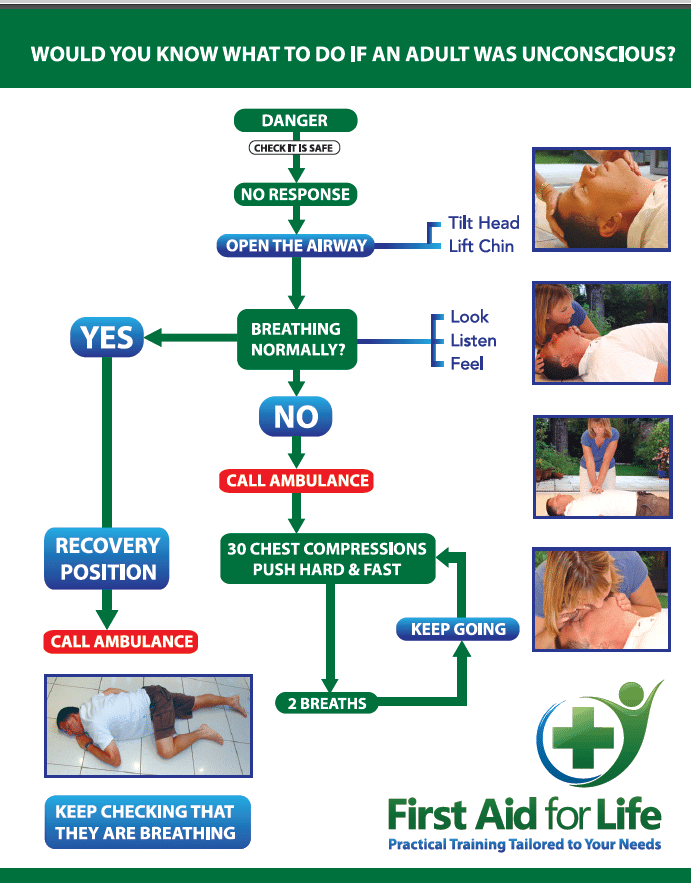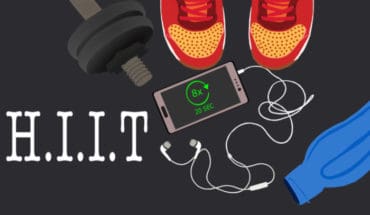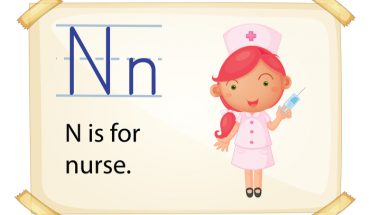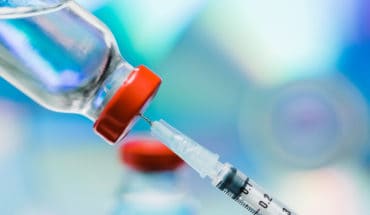How Common are Heart Attacks?
Hospital admission following a heart attack stand at around 100,000 a year in the UK. The earlier someone seeks help if they suspect the are having a heart attack, the better the prognosis. Currently the survival rate is about 7 in 10. However, there are more than 30,000 out-of-hospital cardiac arrests in the UK each year. In these cases the survival rate of less than 1 in 10. As a result, the NHS are encouraging people to call the emergency services earlier. It is estimated this would help to 9 out of 10 people to make a full recovery.
- Heart and circulatory disease, also known as cardiovascular disease, causes a quarter of all deaths in the UK. In fact, it is the largest cause of premature mortality in deprived areas.
- That’s more than 160,000 deaths each year – an average of 460 deaths each day or one every three minutes in the UK.
Consequently the NHS are running a major campaign to help people recognise early signs and symptoms.
Signs and Symptoms of a Heart Attack:
New NHS research shows that 70% of those surveyed understood that pain in the chest is a symptom of a heart attack. However, just 41% knew sweating was a symptom. Only 27% understood feeling weak, lightheaded or a feeling of general unease were also symptoms.
- Symptoms of a heart attack can include:
- Chest pain – a sensation of pressure, heaviness, tightness or squeezing across the chest
- Pain in other parts of the body. It can feel as if the pain is spreading from your chest to your arms
- Feeling lightheaded or dizzy
- Sweating
- Shortness of breath
- Feeling sick (nausea) or being sick (vomiting)
- An overwhelming sense of anxiety (similar to having a panic attack)
- Coughing or wheezing
- Chest pain can be severe. However some people may only experience minor pain, similar to indigestion
- The most common symptom of a heart attack in both men and women is chest pain. But women are more likely to experience other symptoms such as shortness of breath, nausea/vomiting and back or jaw pain
Post-menopausal women and people with Diabetes are less likely to experience chest pain.
What is the Difference Between a Heart Attack and Cardiac arrest?
A heart attack occurs when the supply of blood to the heart becomes blocked. This can starve it of oxygen potentially causing serious muscle damage. Someone having a heart attack will be conscious and breathing.
A cardiac arrest is different – it usually occurs suddenly and without warning with the person quickly losing consciousness. Their heart stops, they will have no pulse and sadly people experiencing a cardiac arrest will usually die within minutes if they do not receive CPR and treatment. A heart attack can lead to a cardiac arrest.
What’s a Heart Attack?
A heart attack occurs when one of the coronary arteries becomes blocked. The heart muscle is robbed of its vital blood supply and, if left untreated, will begin to die because it is not getting enough oxygen. If you are having a heart attack you are likely to be conscious and breathing. Cardiologists have a saying; ‘Time is muscle’. The longer oxygenated blood can reach the heart, the more damage will occur. If someone is quickly transferred to hospital and the blood supply restored, they can make a good recovery.
What’s Cardiac Arrest?
A cardiac arrest is when a person’s heart stops pumping blood around their body and they stop breathing normally. If your heart stops pumping blood around your body your brain becomes starved of oxygen causing you to become unconscious and stop breathing.
If someone is in cardiac arrest they will be unconscious and need to receive CPR immediately. They will also need you to use a defibrillator and call an ambulance to give them a chance of recovery.
What is Angina?
Angina is chest pain caused by reduced blood flow to the heart muscles. It’s not usually life threatening, but it’s a warning sign that you could be at risk of a heart attack or stroke. The discomfort is caused as blood tries to force its way through a narrowed artery.
How to Help Someone Having a Heart Attack:
If you think someone might be having a Heart Attack, stay as calm as you can and encourage them to sit down. It will be easier for them to breathe if they remain upright and so you should support them in a comfortable position. Placing something under their knees can also help their circulation.
If they have a GTN (Glyceryl trinitrate) spray prescription, they should use this now (spray it under their tongue). If they are suffering from angina (rather than a heart attack) this should help. GTN helps to dilate the blood vessels surrounding the heart to improve the flow to the muscles
If the casualty has a prescription for a 300mg Aspirin tablet, they should chew this if the GTN has proved ineffective.
Remain calm and reassuring around the casualty, but phone for an ambulance and if there is a defibrillator available get it now and discretely have it ready to use immediately if they lose consciousness and stop breathing.
A Heart Attack can Lead to a Cardiac Arrest
If they become unconscious and not breathing, phone an ambulance and start CPR – pushing hard and fast on the centre of the casualty’s chest. See the flow chart below. Deploy the defibrillator as soon as possible.
In the UK alone, there are over 30,000 Cardiac arrests occurring outside of hospital each year. Studies have shown that if someone has a Cardiac Arrest in the Community with no defibrillator immediately available, there is only a 6% chance of them surviving. This is even if someone is delivering correct CPR. However, if a defibrillator is used within the first 3 minutes of someone stopping breathing, their chances of survival jumps from 6% to a staggering 74%. This amounts to a 10% reduction in survival rate for every minute of delay.
AEDs
Automatic, External Defibrillators (AED) are now widely available; located at many train and tube stations, shopping centres, dentists and GP Practices, sports grounds, leisure centres and offices. However, people do not always know where to find them and are often scared to deploy them. Read our article on common myths about defibrillators
The Karolinska Institute in Sweden are currently testing a drone which could deliver defibrillators to the scene of a casualty having a cardiac arrest. They can also remotely talk people through how to use them. Their research suggests that these drones could arrive at a destination up to four times faster than an ambulance, saving valuable time and increasing their chance of survival.
If you have a defibrillator available; open it up and it will start talking to you. Dry the casualty’s chest as best you can and position the pads as illustrated on the pads themselves. Ideally someone should be doing CPR whilst another person is putting the pads onto the casualty’s chest and concentrating on the defibrillator. Keep going (listen to and observe the prompts from the machine) and do not stop until the paramedic is there and ready to take over or the casualty begins to regain consciousness.
- What is a seizure? - 13th March 2025
- Febrile Convulsions and Seizures in Children - 13th March 2025
- Why women are less likely to receive CPR or survive cardiac arrest - 6th March 2025

